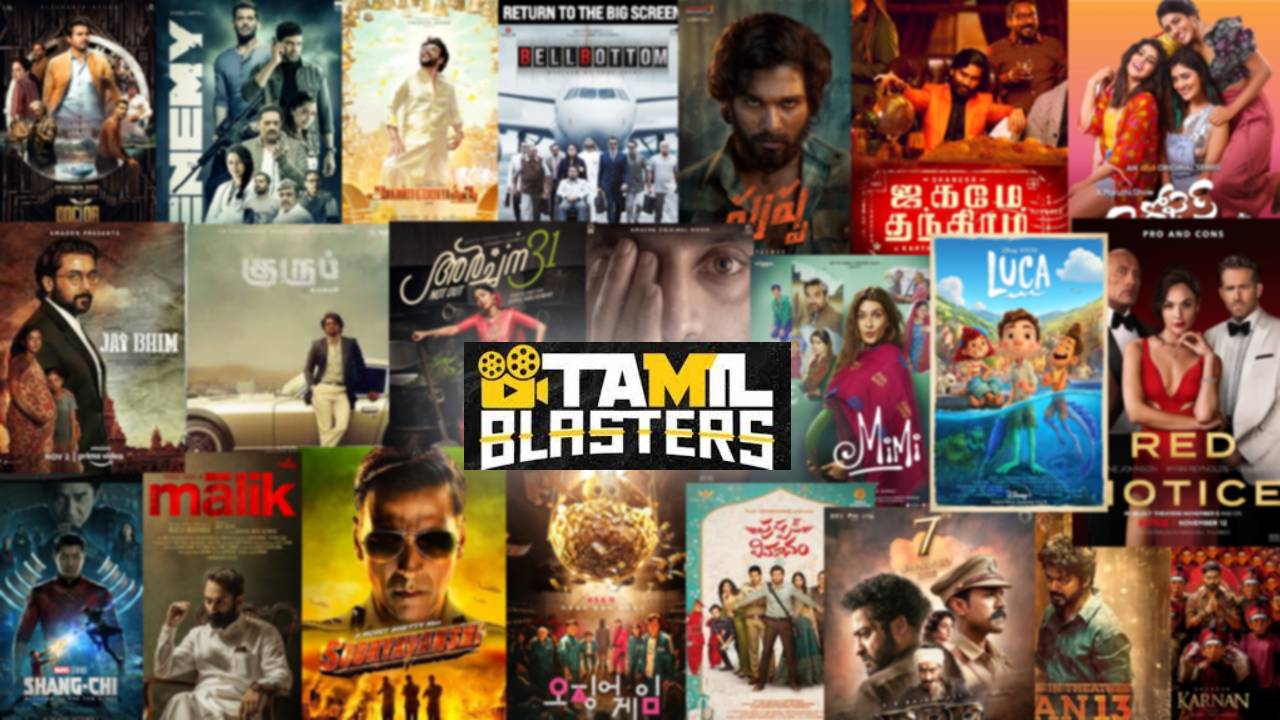Ultimate Guide To Tamilblasters: All You Need To Know
Over the years, Tamilblasters has become a renowned name within the online community, primarily for its vast collection of content. It offers a plethora of movies, TV shows, and much more, catering to a diverse audience. Despite its popularity, Tamilblasters operates in a grey area, raising several questions about its legitimacy and the implications of its use. This article aims to shed light on these aspects, making the complex world of Tamilblasters more accessible to readers.
As we navigate through the intricate details of Tamilblasters, this article is structured to provide clarity and insight. From understanding its origins to addressing common queries, every section is meticulously crafted to ensure a thorough exploration of the topic. Whether you're a seasoned user or a curious newcomer, this guide promises to enrich your knowledge and provide a balanced perspective on Tamilblasters.
Table of Contents
- What is Tamilblasters?
- Historical Background
- How Does Tamilblasters Work?
- Is Tamilblasters Legal?
- Impact on the Film Industry
- User Perspectives
- Risks and Consequences
- How to Access Tamilblasters Safely?
- Are There Alternatives to Tamilblasters?
- Ethical Considerations
- Tamilblasters in the Media
- Frequently Asked Questions
- Conclusion
What is Tamilblasters?
Tamilblasters is an online platform that has gained notoriety for offering a wide array of pirated content, predominantly focusing on Tamil movies and entertainment. It operates by allowing users to stream or download content for free, which has contributed to its widespread popularity. However, this method of content distribution is often at odds with legal standards, leading to significant controversy surrounding its use.
Read also:February 27th Zodiac Sign Personality And Characteristics Of Pisces
Historical Background
The origins of Tamilblasters can be traced back to the early days of online piracy. As internet accessibility improved, platforms like Tamilblasters emerged to cater to audiences seeking free entertainment. Over time, it evolved to include a broader range of content, expanding from Tamil movies to include international films and series, thus broadening its user base. This growth, however, has been met with increasing scrutiny from legal authorities and industry stakeholders.
How Does Tamilblasters Work?
Tamilblasters functions by uploading pirated copies of movies and TV shows onto its platform, making them accessible for users to stream or download. The website often changes its domain to evade legal actions, a common tactic among similar platforms. Additionally, Tamilblasters typically generates revenue through advertisements, which are displayed prominently on the site. This model allows it to offer free content, but it also poses risks to users who may unintentionally engage with malicious ads.
Is Tamilblasters Legal?
The legality of Tamilblasters is a contentious issue. In most jurisdictions, the distribution and consumption of pirated content are considered illegal. Tamilblasters operates in violation of copyright laws, making it an illegal platform in many countries. Users accessing such content can also face legal repercussions, depending on the laws of their respective regions. Despite these risks, Tamilblasters continues to attract users, highlighting the ongoing battle between access and legality in digital spaces.
Impact on the Film Industry
The rise of Tamilblasters and similar platforms has had a profound impact on the film industry. By providing free access to pirated content, these sites significantly undermine the revenue potential of films, affecting all stakeholders from producers to actors. The financial losses incurred by the industry are substantial, prompting calls for stricter enforcement of anti-piracy laws. Moreover, the availability of high-quality pirated content can also detract from the incentive to visit cinemas, further exacerbating the issue.
User Perspectives
From a user standpoint, Tamilblasters offers a convenient and cost-free way to access a wide range of entertainment. This appeal is particularly strong among audiences with limited access to legal streaming services or those unwilling to pay for multiple subscriptions. However, users are often unaware of the legal and security risks associated with using such platforms. Discussions within online communities often highlight a lack of awareness or concern about these issues, focusing instead on the accessibility of content.
Risks and Consequences
Engaging with Tamilblasters comes with several risks. Legally, users may face fines or other penalties if caught accessing pirated content. From a cybersecurity perspective, the site is notorious for hosting a range of advertisements, some of which may lead to malware or phishing attacks. Users are advised to exercise caution and employ protective measures, such as using VPNs or ad-blockers, to mitigate these risks. The consequences of using Tamilblasters extend beyond legalities, impacting the overall safety and privacy of users.
Read also:Exciting Matches Of The Leagues Cup A Football Extravaganza
How to Access Tamilblasters Safely?
While accessing Tamilblasters is not recommended due to its illegal nature, those who choose to do so should prioritize safety. Using a VPN can help obscure user identity and location, adding a layer of protection. Ad-blockers can reduce the risk of interacting with malicious advertisements. Additionally, users should be aware of the potential for malware and ensure their devices have robust security software installed. However, the safest approach remains to avoid such platforms altogether and opt for legal alternatives.
Are There Alternatives to Tamilblasters?
Yes, there are numerous legal alternatives to Tamilblasters that offer a vast array of content. Streaming services like Netflix, Amazon Prime Video, and Disney+ provide extensive libraries of movies and TV shows for a subscription fee. For Tamil content specifically, platforms like Hotstar and Sun NXT offer a range of regional films and series. These services ensure that creators are compensated for their work and offer a safe, legal viewing experience. Opting for these alternatives supports the industry and provides peace of mind for users.
Ethical Considerations
Using platforms like Tamilblasters raises several ethical questions. By accessing pirated content, users contribute to a system that deprives creators of rightful earnings. This affects the sustainability of the industry and the livelihoods of those involved. Ethically, consumers are encouraged to support legal avenues to ensure that creators receive their due compensation. The choice to use Tamilblasters reflects broader issues of accessibility and affordability in the entertainment industry, highlighting the need for more equitable solutions.
Tamilblasters in the Media
Media coverage of Tamilblasters is often focused on its legal battles and the impact of piracy on the entertainment industry. Reports typically highlight government efforts to shut down such platforms and the challenges involved in combating online piracy. Additionally, discussions around Tamilblasters in the media often include debates on the balance between access to entertainment and the protection of intellectual property rights. The platform's persistent presence despite crackdowns underscores the complexities of addressing digital piracy.
Frequently Asked Questions
- Is it safe to use Tamilblasters? While some users access Tamilblasters without issues, it poses significant legal and cybersecurity risks. It's safer to use legal streaming services.
- Can I get in trouble for using Tamilblasters? Yes, using Tamilblasters can lead to legal consequences, including fines or other penalties, depending on local laws.
- How does Tamilblasters make money? Tamilblasters typically generates revenue through advertisements displayed on its platform, despite offering free content.
- What types of content does Tamilblasters provide? Tamilblasters offers a wide range of pirated content, primarily focusing on Tamil movies but also including international films and TV shows.
- Why is Tamilblasters popular? Tamilblasters' popularity stems from its vast collection of free content, appealing to users seeking cost-free entertainment options.
- What are the legal alternatives to Tamilblasters? Legal alternatives include streaming services like Netflix, Amazon Prime Video, Hotstar, and Sun NXT, which offer extensive libraries of content.
Conclusion
Tamilblasters exemplifies the ongoing challenges faced by the entertainment industry in the digital age. While it offers a convenient solution for accessing content, the risks and ethical implications cannot be ignored. As legal measures against piracy continue to evolve, the onus is on users to make informed choices, supporting legal avenues that respect creators' rights. By choosing legitimate platforms, consumers can enjoy content safely and contribute to the sustainability of the entertainment industry.
Article Recommendations

